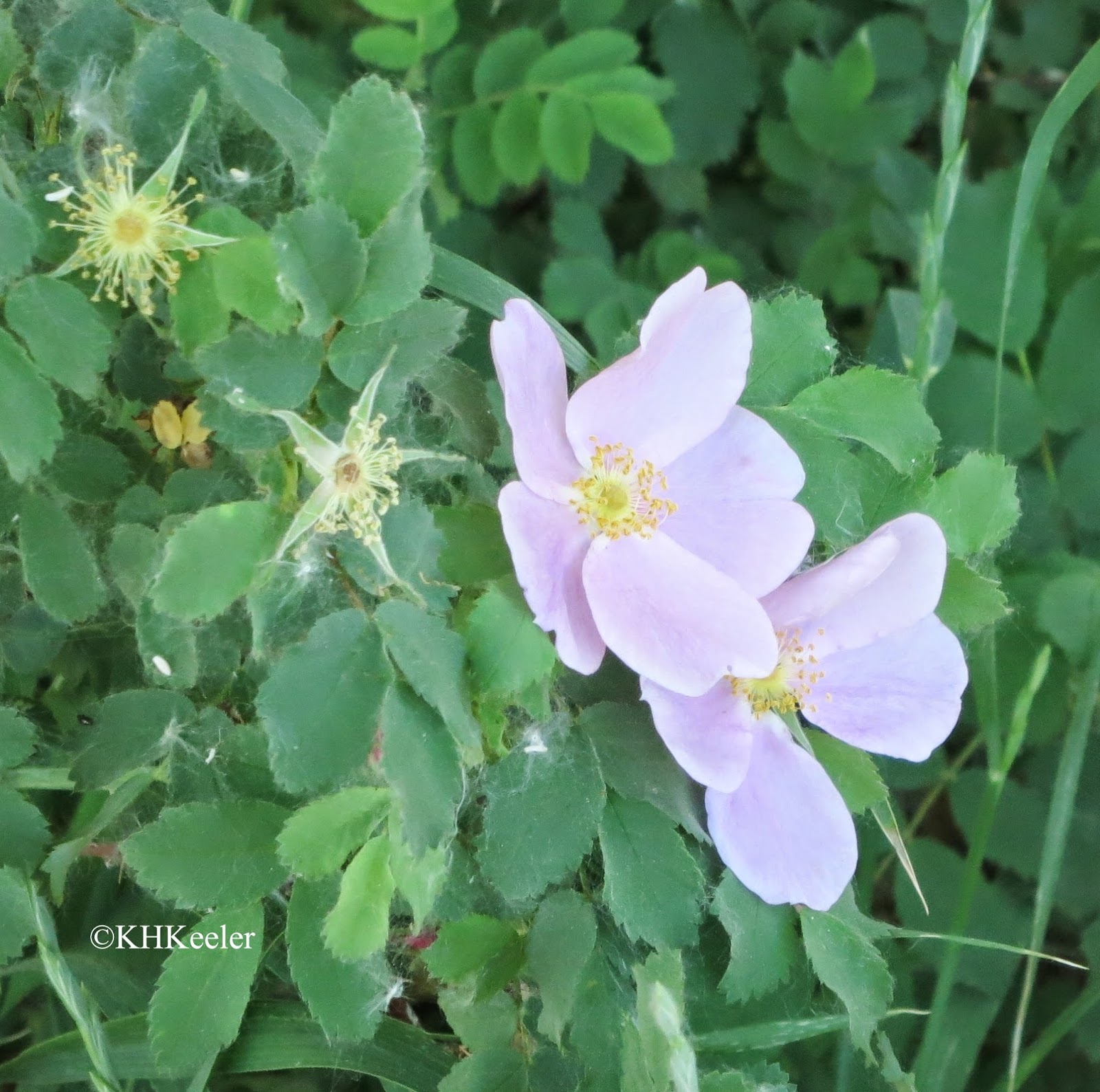 |
| primrose, Primula eliator from my yard |
What is special about primroses?
They are pretty!
Also, I associate them with the literature set in England I read as a child. Primroses grew in the well-tended gardens of the ladies in quaint English villages. They are pretty!
 |
| primrose, Primula probably polyanthus group, 19th century hybrid of P. veris x P. vulgaris |
 |
| wild roses, Rosa woodsii, rose family, Rosaceae |
 |
| evening primrose, Oenothera macrocarpa, evening primrose family, Onagraceae |
 |
| oxlip primrose, Primula eliator |
The USDA plants website lists 20 Primula species, genuine primroses, in North America, all native except 2--and yet almost none of them grow in the places I’ve lived; New York, Ohio, Michigan, Nebraska and California (USDA map). Although four species can be found in Colorado, I have not yet seen them in nature.
Roses and evening primroses, both NO relation to primroses, are much more familiar to me.
Well, because of primrose's happy reputation.
Primroses bloom early in the spring. The name, Primula, is from the Latin word for first, primus, referring to their early spring flowering. For England, they are one of the flowers that symbolize the coming of spring. (In England the common primroses are often called cowslips.)
The Primrose Path sticks in my mind as a positive association, but in fact it is from Shakespeare and slightly sinister:
Doe not as some vngracious pastors doe,
Showe me the step and thorny way to heauen
Whiles a puft, and reckles libertine
Himselfe the primrose path of dalience treads. (Hamlet, I iii 50)
Primroses had a definite association with wantonness in English folklore.
Folklore also linked primroses to the success of chickens, so that in most places it was bad luck to pick primroses and bring them into the house in the early spring as the hens were starting to lay eggs. In particular the number of primroses picked was the number of fertile eggs the chickens would lay, so bringing in 13 or more primroses was great, but picking only one or two meant there would not be enough eggs this spring. At the beginning of spring, when you'd most want to pick the first primroses to celebrate spring, finding more than 13 might be very difficult. Be careful what you start, you might be hiking a long way for a couple more primrose flowers, even when you don't really believe it affects the chickens.
 |
| primrose, Primula, probably a hybrid. No flowers here yet. |
-- but they are still pretty.
About primrose reproduction next time.
Comments and corrections welcome.
References
Martin, Laura C. 1987. Garden flower folklore. The Globe Pequot Press, Chester Connecticut.
Vickery, Roy. 1995. Oxford dictionary of plant-lore. Oxford University Press, Oxford.
 |
| primrose, Primula eliator |
Kathy Keeler
More at awanderingbotanist.com
Join me on Facebook: https://www.facebook.com/AWanderingBotanist
Buy the book! Curious Stories of Familiar Garden Plants by Kathy Keeler, A Wandering Botanist. Now available on Amazon link
Buy the book! Curious Stories of Familiar Garden Plants by Kathy Keeler, A Wandering Botanist. Now available on Amazon link
No comments:
Post a Comment